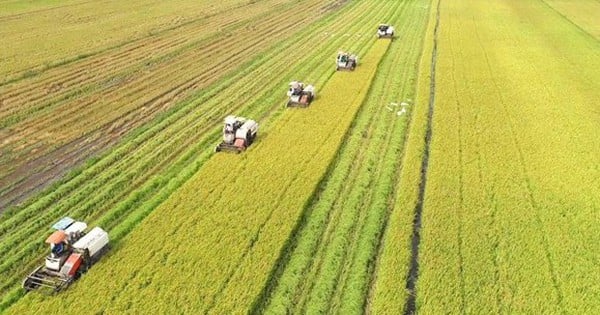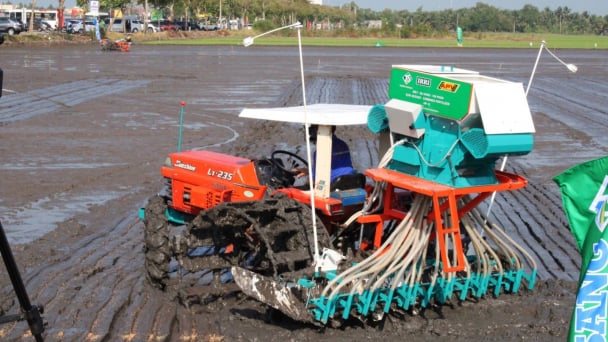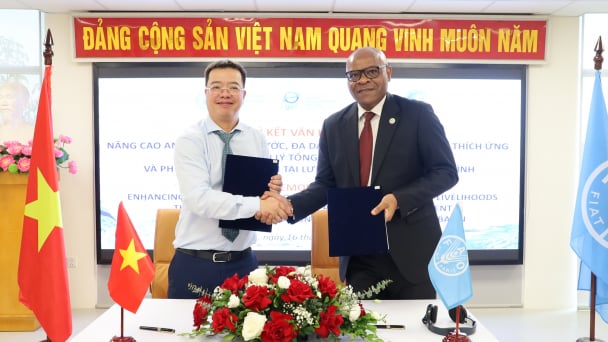May 21, 2025 | 01:35 GMT +7
May 21, 2025 | 01:35 GMT +7
Hotline: 0913.378.918
May 21, 2025 | 01:35 GMT +7
Hotline: 0913.378.918
A report published by the International Energy Agency (IEA) in June said that the region would need to fast accelerate its collective investment in carbon capture technologies, to the tune of an average of US$1 billion per year between 2025 and 2030, or risk missing Paris Agreement temperature targets.
That would mean developing capture potential from essentially zero today up to 200 million tonnes or more by 2050.
Globally, the IEA in its separate Net Zero by 2050 Roadmap states that carbon capture, utilisation and storage (CCUS) technologies will need to be responsible for more than 10 per cent of cumulative emissions reductions.
CCUS works in different ways, but its core principle is to gather carbon dioxide from polluting sources before it reaches the atmosphere and then convert it into something useful or store it away underground over the long term.
The main target of CCUS is industrial processes where reducing emissions remains difficult, such as in the production of cement, steel and chemicals, as well as dirty power generation.
Currently, many of these capture technologies are largely untried, non-commercialised and highly expensive.
Globally, there are just 21 projects currently in operation. There are none in Southeast Asia but four of them - in Indonesia, Malaysia, Singapore and Timor‑Leste - are in some form of development. The effectiveness of Australia’s only project has been hampered this year by sand clogging.
Still, the looming climate crisis - and increasing regional power needs - has escalated the urgency to try and roll out carbon capture, despite the challenges.
“The world is chasing CCUS technologies because there are limited options to mitigate the climate change impact at the speed and scale needed to remain within the available carbon budget,” said Prakash Sharma, the head of markets and transitions for Wood Mackenzie Asia Pacific, a global energy research and consultancy group.
“The momentum is building no doubt. Although the projects are concentrated in Europe and the US, the activity is gaining pace in Australia, China and Southeast Asia,” he said.
Southeast Asia continues to lean heavily on fossil fuels like coal for power generation, and some plants have many years of operation ahead of them. At the same time, the uptake of renewable electricity has been slow in several countries.
"ALMOST IMPOSSIBLE TO ESTIMATE THE COSTS"
IEA said that CCUS can help the clean transition by allowing heavily polluting power stations and industrial facilities that have only recently been built to continue operating, with “substantially reduced emissions” via retrofitting.
“The technology can be an important pillar for helping the region transition from its current energy mix to one that is aligned with future climate goals,” the IEA report stated.
But there is also criticism of the pursuit of speculative technology with long development times, heavy reliance on government investment and few signs of prices coming down.
“Let's be clear here, CCUS has many issues: It's hugely expensive, not commercially viable, and if deployed with the likes of a coal plant, would still lead to emissions from coal,” said Bill Hare, CEO of non-profit organisation Climate Analytics.
“CCUS is not commercially viable despite substantial political and financial support for developing the technology globally. It is almost impossible to estimate the costs, because the technology is simply not available, at scale, anywhere in the world, and is unlikely to become so soon.
“For too many years the coal industry has used the promise of CCUS as a way of prolonging its use. The best tool to tackle climate change in Southeast Asia is by switching from coal to renewable energy,” he added.
Regardless of the criticism, there is support from governments, investment banks and private companies to build up CCUS capacity. This is despite a lack of regulatory frameworks to support it presently.
The Asia Development Bank (ADB), which has been a keen supporter of CCUS, continues to support countries in their early work to build up regional capacity. It has called carbon capture a “game changer” and is preparing a long-term plan for mass deployment in the future.
“CCUS is a compelling technology for Southeast Asia due to both fossil fuel production and use in the region,” said David Elzinga, a senior energy specialist at ADB.
“Going forward, as the technology and processes develop, we expect to see greater CCUS activities in the power, cement, and iron and steel sectors.”
REGIONAL COOPERATION
Wood Mackenzie has also released a recent report highlighting the benefits of CCUS and has done research on identifying land that could be best utilised to store carbon.
Largely, depleted oil and gas fields and other deep geological formations are seen as the best options. At present, exploration is underway in various such areas off the coast of Malaysia, Indonesia and Timor Leste.
In February, Exxon Mobil announced a CCUS hub concept, with a plan to capture carbon emissions from Singaporean manufacturing facilities.
“Southeast Asia could offer carbon storage services from mature oil and gas fields to interested overseas companies and generate new revenue streams,” said Sharma of Wood Mackenzie.
It is an area where regional cooperation could help lower costs and maximise efficiencies.
Wood Mackenzie found that scaling up projects to find economies of scale will be essential, with plans for carbon capture clusters with linked transport infrastructure a blueprint for future CCUS projects.
In its report, the IEA gave the example of the Northern Lights CO2 transport and storage project in Norway, which will accept captured carbon from facilities across Europe.
There are signs that this sort of regional cooperation has already begun in Southeast Asia.
In 2020, Singapore signed an MOU with Australia to promote low carbon technology, with CCUS considered a priority, on top of a S$49 million Low-Carbon Energy Research Funding Initiative.
Last month, officials from ASEAN, Japan, Australia and the United States agreed on an initiative - dubbed the Asia CCUS Network - to promote new project development and also help to identify suitable land for carbon storage.
“The network will bridge the knowledge gap between the West and Asia in terms of CCUS technology and policy development. Therefore, we see high momentum,” said Dr Han Phoumin, a senior energy economist at the Economic Research Institute for ASEAN and East Asia (ERIA).
He says he expects ASEAN governments to ramp up their domestic policies on CCUS in the near future and believes it will become commercially viable after 2030.
“Decarbonisation through CCUS technology is extremely important,” he said “Fortunately, there is a large potential of CO2 storage in the Southeast Asia region. Lots of investment will be needed.”
(CNA)

(VAN) In 2024, over 295 million people across 53 countries and territories faced acute hunger—an increase of almost 14 million people compared to 2023, while the number of people facing catastrophic levels of hunger reached a record high.

(VAN) World Environment Day 2025 (June 5) carries the theme 'Beat Plastic Pollution' continuing to emphasize the global urgency of addressing the plastic waste crisis.

(VAN) This was the assessment shared by experts at the workshop titled 'Assessing the Role and Potential of Low-Emission Rice Production Systems in Vietnam,' held on the morning of May 19.

(VAN) Cai Rong Port is the fisheries control center of Quang Ninh, helping to monitor fishing vessels, combat IUU fishing, and remove the EC's 'yellow card'.

(VAN) The German Agricultural Society (DLG) explores the possibility of establishing a mechanization service center in Vietnam’s Mekong Delta to support farmers in accessing and utilizing advanced machinery.

(VAN) On May 16, the Department of Water Resources Management, in collaboration with the Food and Agriculture Organization of the United Nations (FAO), held a signing ceremony for the GEF-8 project document.

(VAN) Food safety, mechanization, vocational training, and market opening are key areas of cooperation expected between the Vietnamese Government and the Federal Republic of Germany.